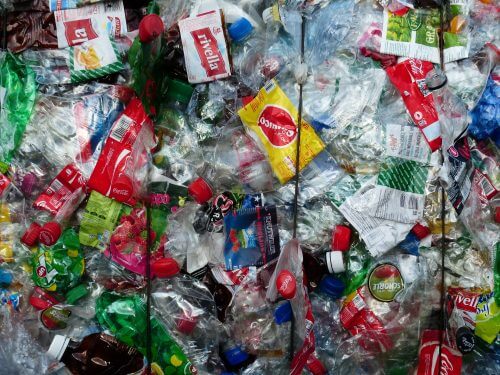Scientists have developed a relatively simple method to turn plastic waste into fuel

By Dr. Daniel Mader, Zivata - Science and Environment News Agency
Polyethylene is a type of plastic, and the polymer (a huge molecule made up of small repeating subunits) is the most common synthetic in the world. The fact that it is inert - that is, indifferent to a variety of materials and conditions - allows us to use it for a variety of uses: plastic bags, pipes, furniture, toys, work tools, and more. At the same time, its durability makes it difficult to recycle it and to treat cheaply and efficiently all the waste that is created from it. This fact makes it a serious waste nuisance. Most of the polyethylene waste is dumped in landfills at best, some finds its way into the oceans, where it causes trouble To many living creatures and to us too, Part Pollutes the environment, a small part is used to produce low-quality energy through burning, and an even smaller part is recycled.
The problem is that the recycling process is also often harmful to the environment. Therefore, a group of researchers from China and the United States developed a new way for breaking down polyethylene under relatively low temperature conditions (175 degrees Celsius). Iridium is used as a catalyst (catalyst) for the decomposition of polyethylene, and later short molecules of alkanes (alkanes) bind to the sub-units of polyethylene and form short molecules, which can be used as liquid fuel, wax, or raw materials for the plastic industry. Such products are worth much more money than the monetary value of low-level energy production in a burner, for example.
The alkanes used in the process are cheap and common (obtained from petroleum refining). Since the process is carried out at a low temperature, it is energy efficient and has good control over the composition of the products. These characteristics make this process cheap for large-scale application, in contrast to existing processes for breaking down polyethylene (pyrolysis, for example) that are carried out at a high temperature (over 400 degrees Celsius).
The new Chinese-American research showed that it is possible to control the ratio of the products formed between liquid fuels and wax, with the help of changing the composition of the iridium catalyst, and during the time in which the reaction takes place. Also, it is possible to achieve a perfect decomposition of the polyethylene in just 24 hours. If this research can be applied widely, we can reuse materials and turn polyethylene waste into energy instead of producing more and more garbage.

2 תגובות
To assemble
Polyethylene is a polymeric material and therefore belongs to the field of knowledge of polymer chemistry - a subfield of organic chemistry.
It is true that manure, also called organic fertilizer, is also organic material, of course. Its natural decomposition time is much shorter than the natural decomposition time of polymers.
Both substances are organic, but the natural decomposition time is the significant difference between the two - for the purpose of the discussion.
to be precise,
It says: "To turn polyethylene waste into energy instead of producing more and more garbage."
It is appropriate that the translators of the news learn and internalize the difference between garbage and garbage (or waste)
Since manure is a positive organic product that is used for fertilization/fertilization in agriculture,
The polyethylene is not organic and cannot be turned into fertilizer/fertilizer,
Therefore, once again, it is possible to create compost from non-plastic organic waste,